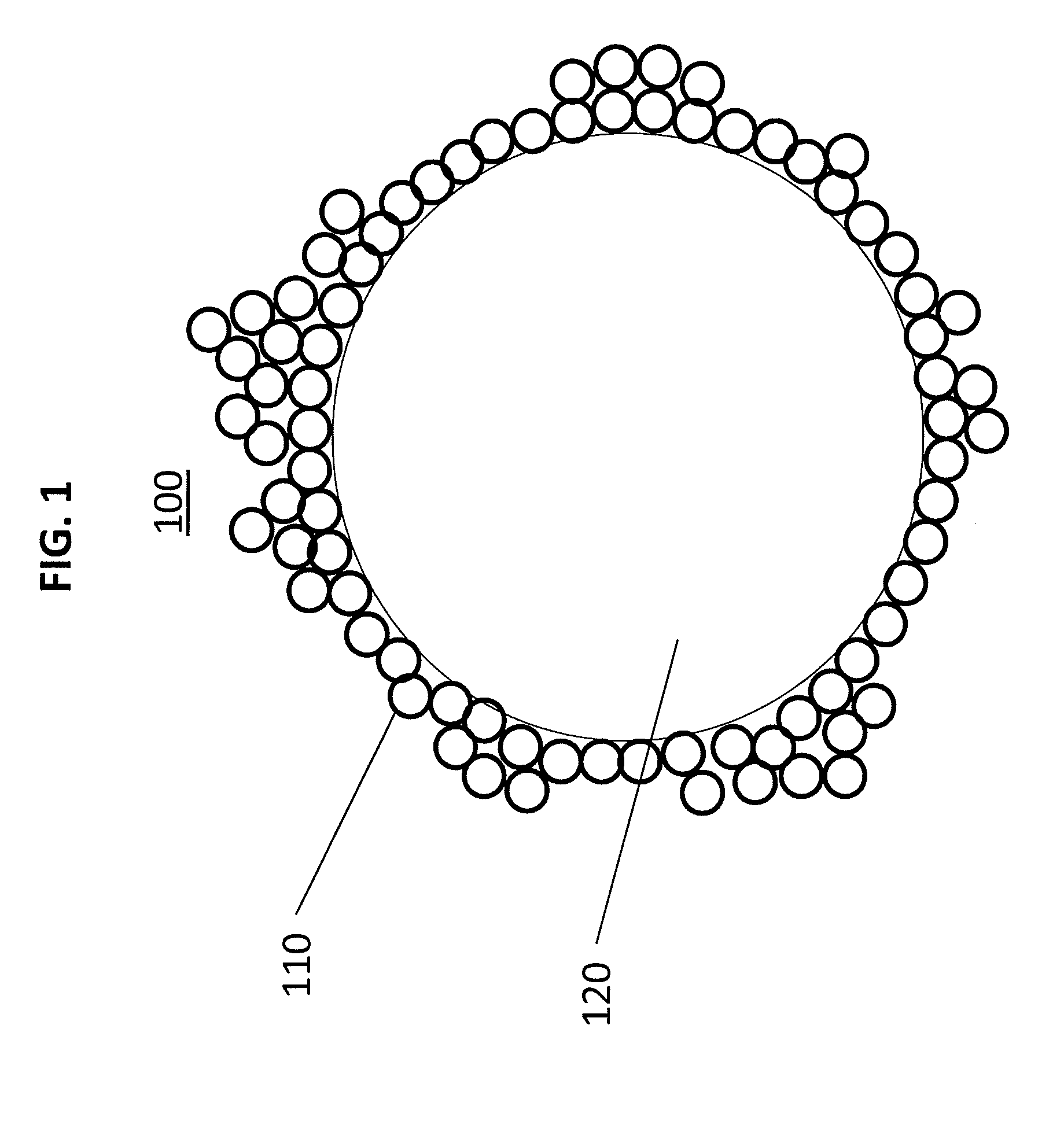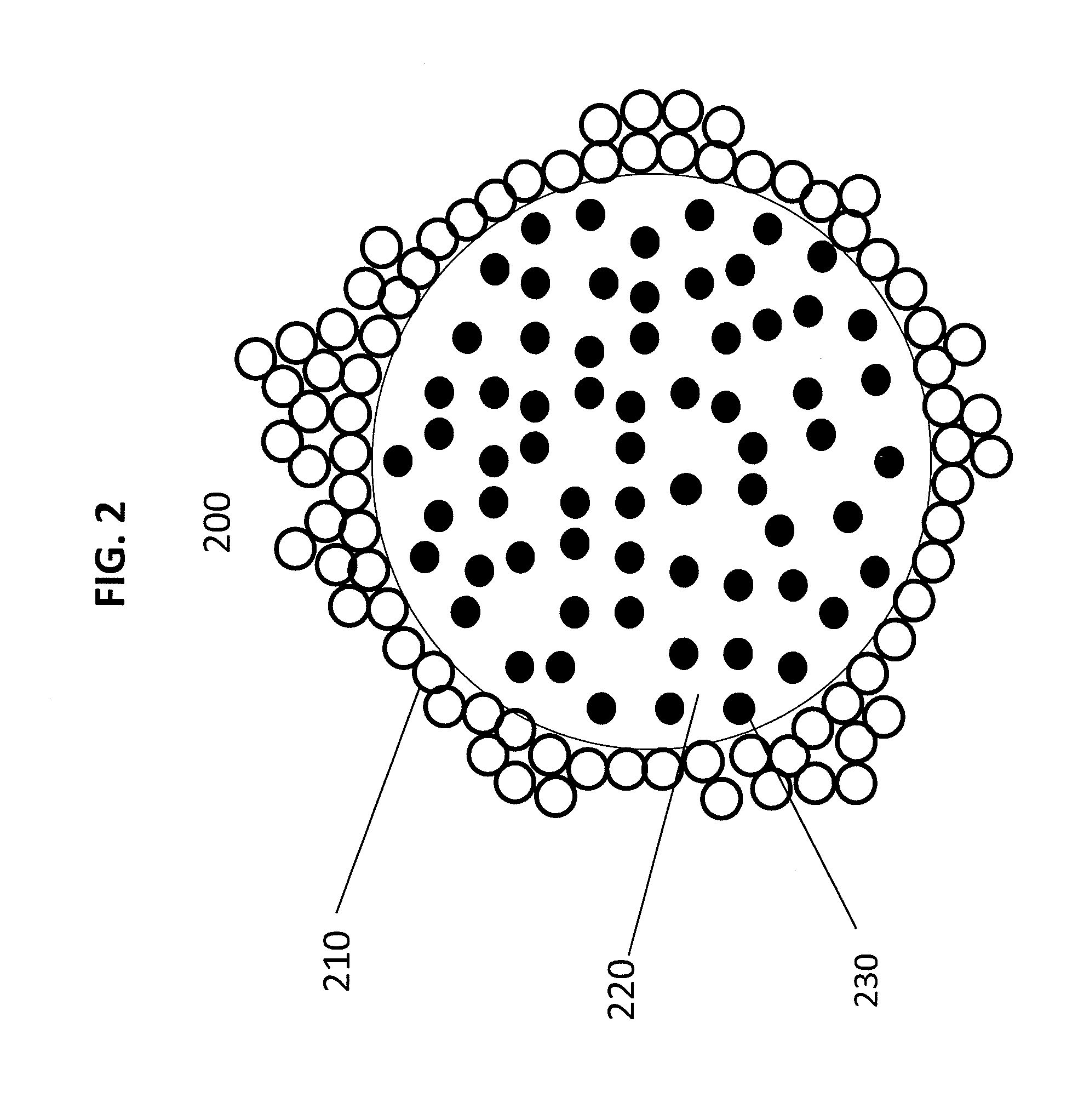Anhydrous Powder-to-Liquid Particles
- Summary
- Abstract
- Description
- Claims
- Application Information
AI Technical Summary
Benefits of technology
Problems solved by technology
Method used
Image
Examples
example 1
Method of Making the Core-Shell Particles
[0170]A series of powders comprising different cores were made as follows. In each case, the shell was made of AEROSIL R812S Hydrophobic Fumed Silica (commercially available from Evonik Degussa Corporation).
[0171]The powders were made using an Oster Blender (model BCBG08) with the Oster Milkshake Blade (Model 6670), and Oster Blend-N-Go Cup (Model 6026). For each powder, the ingredients of the liquid core were added to the blender at room temperature and mixed for about 1 minute. Then, AEROSIL R812S Hydrophobic Fumed Silica was added to the liquid core ingredients. The contents were blended at the highest setting for about 10-20 seconds, yielding core-shell particles.
[0172]Tables 2 (single phase liquid core) and 3 (emulsion liquid core) show the ingredients of the different samples.
example 2
Particle Size Measurement of Core-Shell Particles
[0173]The particle size of the core-shell particles of Sample 1 was manually measured using scanning electron microscopy (SEM). The powder was taped onto an adhesive tape across a distance of 3″-6″ to ensure dispersion of the particles. Particles were then measured manually on a 27″ screen with a mouse. The diameter was measured as the longest visible distance across particle. The mean and median particle diameters for Sample 1, shown in Table 1 below, were 14.77 μm and 10.92 μm, respectively. Maximum and minimum particle diameters were 51.72 μm and 3.16 μm, respectively.
TABLE 1Particle Size of Sample 1ParticleParticleParticleParticleDiameterDiameterDiameterDiameter(maxi-(mini-SampleCoreShell(mean)(median)mum)mum)1Glycerin5% 14.77 um10.92 um51.72 um3.16 umR812S
example 3
Measurement of Surface Properties of the Core-Shell Particles
[0174]The percent polar component of overall surface tension was measured for the polar liquids of each sample made in Example 1 using the Fowkes method described herein. The overall surface tension of each sample was measured five times via the Wilhelmy plate method using a Kruss Tensiometer K100. The plate used was a standard platinum plate of 19.9 mm×0.2 mm perimeter.
[0175]The contact angle of each sample was also measured five times on a clean piece of poly(tertafluoroethylene) PTFE using a Kruss Drop Shape Analysis System DSA10. Using the equation, the dispersive surface tension component was calculated as:
σLD=σL2(cosθPTFE+1)272
where σPTFE=the contact angle measured between PTFE and the sample liquid, and σL is the surface tension of the liquid core. The polar component of overall surface tension for each liquid was then determined by difference (σLP=σL−σLD). The percent surface polarity was (%=σLP*100% / σL).
[0176]The ...
PUM
| Property | Measurement | Unit |
|---|---|---|
| Fraction | aaaaa | aaaaa |
| Percent by mass | aaaaa | aaaaa |
| Percent by mass | aaaaa | aaaaa |
Abstract
Description
Claims
Application Information
 Login to View More
Login to View More - R&D
- Intellectual Property
- Life Sciences
- Materials
- Tech Scout
- Unparalleled Data Quality
- Higher Quality Content
- 60% Fewer Hallucinations
Browse by: Latest US Patents, China's latest patents, Technical Efficacy Thesaurus, Application Domain, Technology Topic, Popular Technical Reports.
© 2025 PatSnap. All rights reserved.Legal|Privacy policy|Modern Slavery Act Transparency Statement|Sitemap|About US| Contact US: help@patsnap.com



